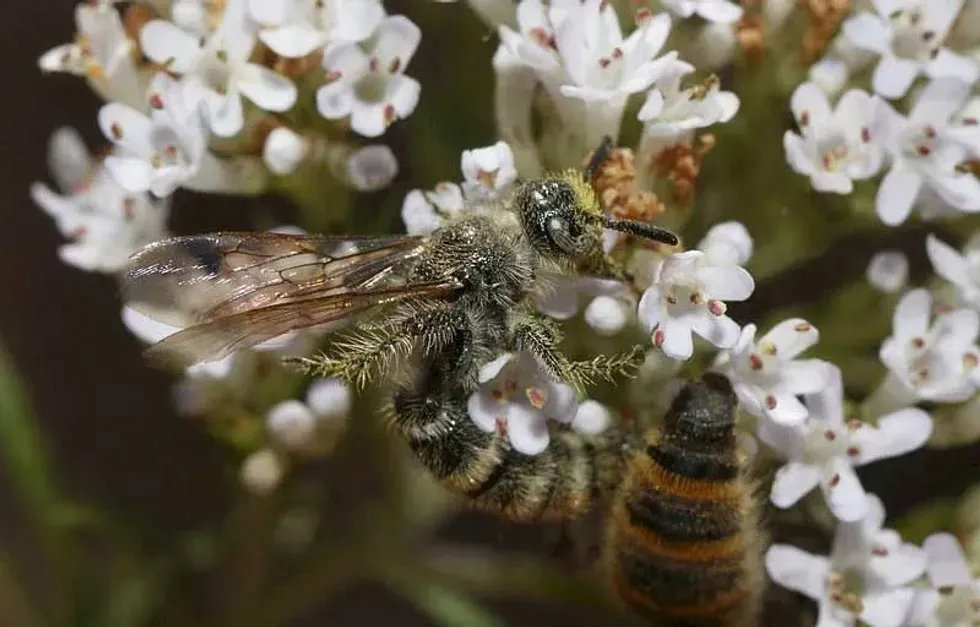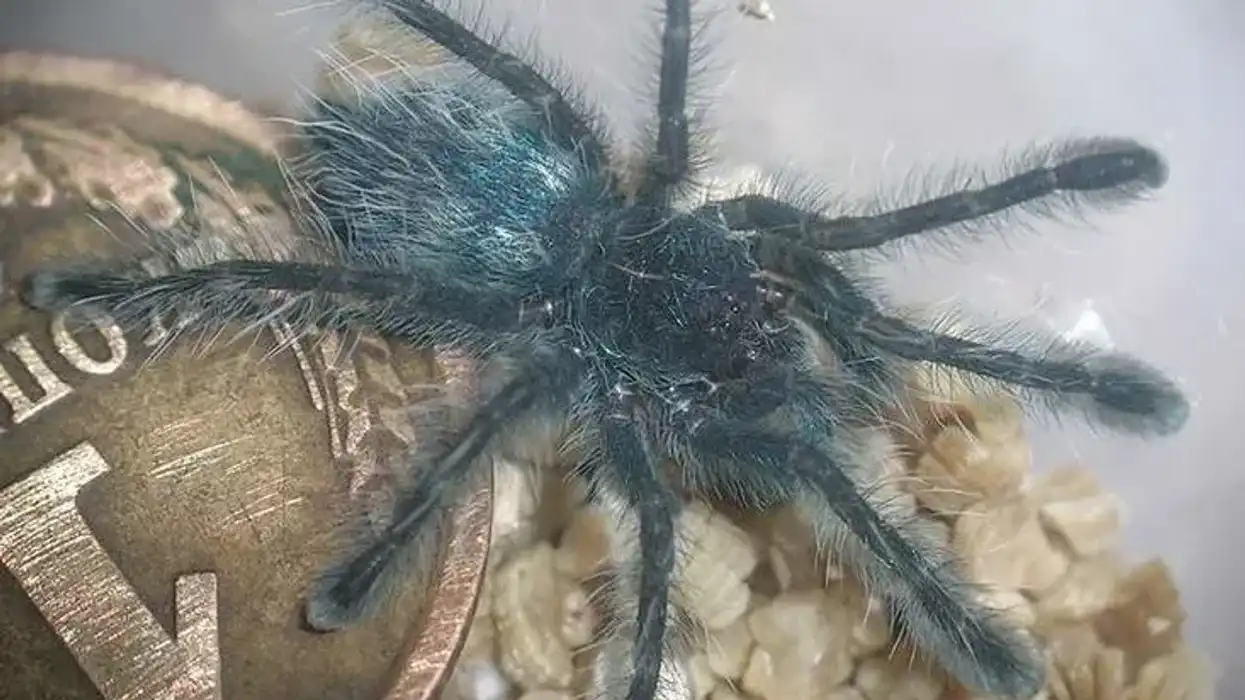Pests can be really annoying! When we think about pets we may often refer to cockroaches or small bugs.
But mother nature holds a lot more than this. A kind of pest destroying our gardens is an immature (grubs) scarab, green June beetle.
But not to worry, because mother nature has her own ways of balancing the natural world. Scoliid wasps (Scolia dubia) are very important natural agents in control of these beetle pests. Scoliid wasps have the ability to dig and locate developed beetle grubs and then a female wasp lays an egg on it.
After the egg hatches, the Japanese beetle grub is doomed. Scoliidae (common name Scoliid wasp) have stings and are very essential and the only parasitoids of these immature green June beetle pests.
This species can be widely located across North America in the north of Mexico. If you locate this species in your garden, it is an indication of Japanese beetle infestation.
Belonging to the family of Sociliodae, blue-winged Scoliid wasps are scientifically known as Scolia dubia. After reading facts about giant Scoliid wasp, you may also look at European paper wasp facts and great golden digger wasp facts only on Kidadl.
Scoliid Wasp Interesting Facts
What type of animal is a Scoliid wasp?
The Scoliid wasp (Scolia dubia) is an insect with a lobed body and a good self-defense system. Native to America and Europe, blue-winged Scoliid wasps may be seen mostly around the flowers dawdling collecting nectar and as important pollinators of certain plant species.
What class of animal does a Scoliid wasp belong to?
The Scoliid wasp (Scolia dubia) belongs to class Insecta and phylum Arthropoda of the kingdom Animalia. More specifically it belongs to the family of Scoliidae wasps, of the order Hymenoptera. These arthropods have distinct features and a segmented body along with two sets of jointed appendages that assist them in properly settling on flowers and leaves while collecting nectar.
How many Scoliid wasps are there in the world?
There are around 560 species of Scoliidawasps found across the globe. There is no proper figure on their numbers, but these wasps are found in good numbers in the American and the European Continent.
Where does a Scoliid wasp live?
In the North American continent, these wasps are mostly found in North Carolina, New England, Florida, and the Rocky Mountains in the west; mostly from the months of June to October. Their number increases in the month of August. The Scoliid wasp's Florida habitat comprises soil in areas with good vegetation such as gardens and parks.
What is a Scoliid wasp's habitat?
The blue-winged Scoliid wasp lives and breed just like bees and its nests are made of mud under the leaves. This species can be mostly spotted buzzing over flowers and collecting nectar and feeding on scarab beetle grubs. This species is present in North Carolina from June to October.
Who do Scoliid wasps live with?
One may spot a double-banded Scoliid wasp feeding alone on a flower for nectar. They are mostly found in groups with other Scoliid wasps in dozens.
How long does a Scoliid wasp live?
Insects usually don't have a very long lifespan and may live for a few months after hatching. Although there is not much data on their biology, it is quite clear that this species is similar to other insects. These Scoliid wasps live for a span of few weeks to a few months.
How do they reproduce?
The wasps, just like bees, live in colonies led by a queen wasp. These build nests with the wood chewed and mixed with their own saliva. There, the queen lays an egg on the host beetle grub.
Before laying an egg, the queen wasp will excavate a chamber and transfer the beetle larva into this chamber. The queen wasp is responsible for laying dozens of eggs in the third segment of a grub after stinging and paralyzing it. The larvae hatch out to form a wasp colony.
What is their conservation status?
These are not extinct yet and fall under the least concerned species of animal. But Wasps’ existence is in danger due to advancements in technology and the use of radiation for wireless communication. Their natural pathways are getting disrupted and hence imposing a threat on their survival and existence.
Scoliid Wasp Fun Facts
What do Scoliid wasps look like?

Scoliidae have a segmented body and a pair of wings for flying. Their body is divided into various regions such as the head, neck, thorax, and abdomen.
The first two segments of their body are black in color and the remainder is made of brighter colors such as yellow and red. There is the presence of two pairs of wings that have a color of blue and are wrinkled in the lower region.
At the end of their abdomen, is a presence of a sting, which contains poison as self-defense against possible threats and predators. Besides, they have a set of jointed appendages that assist them in gripping onto objects while looking for food.
How cute are they?
A Scoliid wasp is scary and intimidating in appearance just like bees. Our usual reaction to these creatures would be that we may get frightened and try fleeing away from their vicinity, but these dangerous-looking insects will not harm humans unless they are harassed unnecessarily.
How do they communicate?
Wasps are known for communicating with other wasps in their colony through pheromones. These insects use these pheromones or hormones present in their bodies to create various kinds of signals. These signals may be used for alerting other wasps for food and a possible danger.
How big is a Scoliid wasp?
A Scoliid wasp, from the genus Campsomeris, is usually the same in size as that of a bee but may appear only slightly smaller than a hornet. These are around 0.8-1.0 in (2.0-2.2 cm) long. But Scolia dubia species of wasps are slightly longer in size compared to other wasps.
How fast can a Scoliid wasp fly?
This insect species can fly as fast as most other wasp species at around 25 mph (40 kph), thanks to their two black wings. These wasps can be seen flying close to the ground in gardens.
How much does a Scoliid wasp weigh?
These wasps are lightweight insects. These flying insects weigh around 0.03 oz (0.85 gm). Their light weight is essential for them, as it makes it easier for these wasps to fly without much disturbance.
What are the male and female names of the species?
These wasps are very similar to bees. The queen wasp is the female responsible for laying eggs and expanding the wasp colony and the drones are male wasps. There are also worker wasps that are female but are not fertile by nature because they are a result of a process named parthenogenesis.
What would you call a baby Scoliid wasp?
A baby wasp is called a larva. These larvae emerge out of the eggs just after a span of two to three days and feed on the dead scarab skin after emerging. These larvae take a few months to pupate and emerge into adult wasps. The favorite diet of the larvae is the Japanese Beetle grub.
What do they eat?
The larvae of Scoliid wasps feed on their host, dead scarab’s skin, while the adult Scoliid wasps feed on sugar obtained from nectar from a wide variety of flowers and insects like grasshopper, aphids, and even bees. This habit is very essential for maintaining the population count of the plants these flying insects feed on.
Because, while feeding on flowers, the wasp acts as a pollinator, jumping from one flower to the next.
Are they poisonous?
These Scoliid wasps are parasitoids, hence these garden insects have a sting on their hairy body to paralyze the scarab beetle before taking it as a host.
Also if a wandering person happens to harass them unnecessarily, they may get stung by these venomous insects and to add to that, they can do so multiple times since their sting doesn't fall off, unlike bees.
The wounded individual may suffer from swelling and pain in the affected area.
Would they make a good pet?
These garden insects are not to be domesticated and taken as pets. Although these are natural biological agents that aid in controlling the scarab beetle and other pests infestation.
Did you know...
Scoliid wasps just like others have a similar appearance to hornets. Only the female wasps have stingers and are poisonous. Just like other arthropods, these garden insects have antennae covered in hair that acts as sensory organs.
Costs and benefits of Scoliid wasps
Wasps in general are very important to the ecosystem. These flying wasps are natural pollinators, biological control agents in several pests infestations including beetles. They sting and paralyze their hosts and lay their eggs in them for breeding. But overall their survival is indirectly important for the survival of the entire ecosystem.
How to get rid of Scoliid wasps
A very common and intellectual method of getting rid of wasps is the use of chemical sprays such as insecticides. People also practice a method called nets drenching, where they cover the nets in insecticide and lay them in the affected area. The dawdling wasps later get trapped in it.
Here at Kidadl, we have carefully created lots of interesting family-friendly animal facts for everyone to discover! Learn more about some other arthropods from our northern paper wasp facts and mud dauber wasp facts pages.
You can even occupy yourself at home by coloring in one of our free printable hornet coloring pages.









